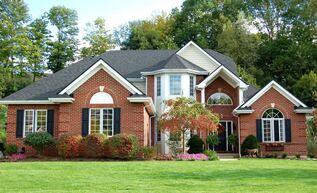 Roofing company can help install and maintain a functional roof Roofing company in Charlotte and Indian Land SC can help you install a functional roof in your home. When it comes to residential home design, one of the key decisions homeowners face is choosing the type of roof for their property. Among the various options available, slanted roofs have garnered significant attention for their unique benefits and aesthetic appeal. In this article, we'll delve into the characteristics and advantages of slanted roofs to help you determine whether they are the right choice for your residential home. What are Slanted Roofs? Slanted roofs, also known as pitched or sloped roofs, are characterized by their steep angle of inclination. Unlike flat roofs, which have little to no slope, slanted roofs feature a noticeable incline, typically ranging from 15 to 45 degrees or more, depending on the architectural style and climate considerations. Advantages of Slanted Roofs
Considerations and Potential Drawbacks While slanted roofs offer a multitude of benefits for residential homes, it's essential to consider potential drawbacks and additional factors before making a final decision. Considerations:
Potential Drawbacks:
While slanted roofs offer numerous benefits for residential homes, including aesthetic appeal, improved drainage, and increased attic space, it's important for homeowners to consider potential drawbacks and additional factors before making a decision. By weighing the costs, maintenance requirements, architectural compatibility, and climate considerations, homeowners can determine whether slanted roofs are the right choice for their residential property. Ultimately, consulting with roofing professionals and considering individual needs and preferences will help ensure a well-informed decision regarding the selection of the roof for your home. Hire the best roofing company in Charlotte and Indian Land SC Advanced Roofing and Exteriors offers commercial roofing and residential roofing services to Charlotte, NC, Indian Land SC, and surrounding areas.
0 Comments
 Roof installer can help you install a functional roof Roof installer in Charlotte and Indian Land SC can help you replace your roof. When it comes to home maintenance, few tasks are as significant as replacing a roof. Over time, roofs endure wear and tear from the elements, leading to degradation and the eventual need for replacement. While replacing a roof is a substantial investment, it's also an opportunity to consider sustainability and environmental impact, particularly concerning the materials used and the disposal of old roofing components. Roof replacement involves removing the existing roofing materials, inspecting the underlying structure for any damage, and installing new materials to ensure the integrity and longevity of the roof. Traditionally, old roofing materials, such as shingles, tiles, or metal sheets, were disposed of in landfills, contributing to environmental pollution and waste accumulation. However, in recent years, there has been a growing awareness of the need for sustainable practices in construction and renovation, including the recycling of roofing materials. Recycling roofing materials offers several benefits. Firstly, it reduces the amount of waste sent to landfills, helping to alleviate environmental pressure. Secondly, it conserves natural resources by reusing materials rather than extracting new ones. Finally, it can save money for homeowners and contractors by reducing disposal costs and potentially providing opportunities for tax incentives or rebates in regions with recycling initiatives. Recyclable Parts in Roof Replacement During a roof replacement project, various components can typically be recycled, depending on the material used. Here are some common roofing materials and their recyclable parts:
Recycling Challenges and Solutions While recycling roofing materials offers significant environmental benefits, there are challenges and considerations to address to ensure effective recycling practices during roof replacement projects.
In conclusion, while there are challenges associated with recycling roofing materials during roof replacement projects, proactive planning, collaboration, and innovation can overcome these obstacles. By addressing issues such as sorting and separation, transportation logistics, regulatory compliance, stakeholder education, and circular economy practices, stakeholders can maximize the environmental benefits of recycling and contribute to a more sustainable construction industry. As the demand for eco-friendly building practices continues to grow, integrating recycling into roof replacement projects will become increasingly important for mitigating environmental impact and fostering a greener future. Hire the best roof installer in Charlotte and Indian Land SC Advanced Roofing and Exteriors offers commercial roofing and residential roofing services to Charlotte, NC, Indian Land SC, and surrounding areas. 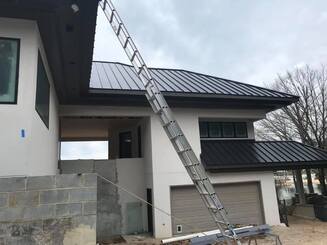 Roof repair contractors can help you detect mold and moss growth on roofs Roof repair contractors in Charlotte and Indian Land can help you detect early signs of mold and moss growth. A roof is one of the most critical components of a building structure, protecting it from the elements. However, over time, roofs are susceptible to various environmental factors that can lead to the growth of mold and moss. Not only can this compromise the integrity of your roof, but it can also pose health risks and detract from the aesthetic appeal of your property. Therefore, it's essential to be vigilant and proactive in identifying the early signs of mold and moss growth on your roof. In this article, we'll explore how you can detect these signs early on and take appropriate measures to address them effectively. What Causes Mold and Moss Growth on Roofs? Before delving into the signs of mold and moss growth, it's crucial to understand what contributes to their development on roofs. Mold thrives in moist, warm environments, making roofs susceptible to mold growth, particularly in regions with high humidity levels. Factors such as inadequate ventilation, trapped moisture, and organic debris buildup on the roof surface create ideal conditions for mold spores to germinate and spread. Similarly, moss growth on roofs is typically a result of excess moisture and shade. Mosses are non-vascular plants that require moisture to survive and reproduce. Consequently, roofs that are shaded by trees or nearby structures tend to retain moisture for more extended periods, providing an ideal habitat for moss colonization. Early Signs of Mold and Moss Growth
Addressing Mold and Moss Growth on Your Roof Having identified the early signs of mold and moss growth on your roof, it's essential to take prompt action to address these issues effectively. Ignoring mold and moss can lead to structural damage, compromised roofing materials, and potential health hazards for occupants. In this section, we'll discuss proactive measures you can take to mitigate mold and moss growth and preserve the integrity of your roof. 1. Regular Roof Inspections: Schedule regular inspections of your roof, preferably at least twice a year, to check for signs of mold, moss, or other damage. During inspections, pay close attention to areas prone to moisture buildup, such as around chimneys, vents, and gutters. Promptly address any issues you identify to prevent them from worsening over time. 2. Maintain Proper Ventilation: Ensure your attic and roof have adequate ventilation to prevent moisture buildup, which can foster mold and moss growth. Proper ventilation allows moist air to escape from the attic, reducing the risk of condensation on the underside of the roof. Consider installing ridge vents, soffit vents, or attic fans to improve airflow and ventilation. 3. Clean Gutters and Downspouts: Regularly clean your gutters and downspouts to remove debris, leaves, and moss buildup that can contribute to roof moisture problems. Clogged gutters can trap water and organic matter, creating a breeding ground for mold and moss. Use a gutter scoop or pressure washer to clear out debris and ensure proper water drainage. 4. Trim Overhanging Trees: Trim back overhanging branches and foliage that cast shade on your roof, as they can promote moss growth by blocking sunlight and trapping moisture. By reducing shade and allowing more sunlight to reach the roof surface, you can discourage moss colonization and inhibit its growth. 5. Apply Roof Treatments: Consider using roof treatments or coatings specifically designed to inhibit mold, moss, and algae growth. These treatments typically contain biocides or fungicides that prevent microbial growth on the roof surface. Apply the treatment according to the manufacturer's instructions for long-lasting protection against mold and moss. 6. Repair Roof Leaks Promptly: Address any roof leaks or water damage as soon as they are detected to prevent moisture infiltration and mold growth. Inspect your roof regularly for signs of leaks, such as water stains on ceilings or walls, and repair damaged shingles, flashing, or seals promptly to maintain a watertight barrier. 7. Professional Roof Cleaning: Consider hiring a professional roof cleaning service to remove existing mold, moss, and algae growth safely and effectively. Professional cleaners have the equipment and expertise to clean your roof without causing damage to the roofing materials. Schedule roof cleanings as needed to keep mold and moss growth in check. Detecting and addressing mold and moss growth on your roof early can help preserve its structural integrity and prolong its lifespan. By implementing proactive measures such as regular inspections, proper ventilation, and maintenance, you can mitigate the risk of mold and moss colonization and ensure a healthy and durable roof for years to come. Stay vigilant and proactive in caring for your roof to protect your investment and the safety of your home. Hire the best roof repair contractors in Charlotte and Indian Land Advanced Roofing and Exteriors offers commercial roofing and residential roofing services to Charlotte, NC, Indian Land SC, and surrounding areas. 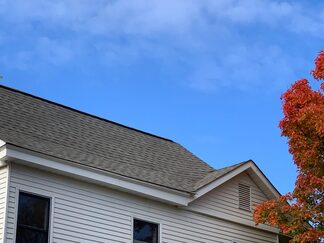 Roof installer can help you enjoy a seamless roof replacement process A roof installer in Charlotte and Indian Land can help you enjoy seamless replacements. A successful roof repair project requires careful planning and preparation to ensure that the job is done correctly and safely. Whether you're tackling a small leak or a more extensive repair, having the right tools, materials, and knowledge is essential. In this article, we'll explore the key elements you need for a successful roof repair project. 1. Inspection: Before you begin any repair work, it's crucial to inspect your roof thoroughly. Look for signs of damage such as missing or damaged shingles, leaks, cracks, or sagging areas. Take note of any areas that may need special attention or additional repairs. 2. Safety Gear: Safety should always be your top priority when working on a roof. Make sure you have the proper safety gear, including a sturdy pair of shoes with good grip, a harness, gloves, and a helmet. Additionally, consider using a ladder stabilizer to prevent the ladder from slipping. 3. Tools: Having the right tools for the job will make your roof repair project much easier and more efficient. Some essential tools you may need include:
4. Materials: Depending on the type and extent of the damage, you may need various materials for your roof repair project. Common materials include:
5. Knowledge and Expertise: While some minor roof repairs can be done by homeowners with basic DIY skills, more extensive repairs may require professional expertise. If you're unsure about the extent of the damage or how to properly repair it, don't hesitate to consult with a roofing contractor. They can provide guidance and ensure the job is done correctly. 6. Weather Considerations: Keep an eye on the weather forecast before starting your roof repair project. Ideally, you'll want to work on a dry, sunny day to ensure that the materials adhere properly and to minimize the risk of accidents. 7. Permits and Regulations: Depending on where you live, you may need to obtain permits or adhere to specific regulations when repairing your roof. Check with your local building department to determine what requirements apply to your project. By taking the time to plan and prepare properly, you can ensure that your roof repair project goes smoothly and is completed to a high standard. In part two of this article, we'll delve into the actual repair process and provide tips for tackling common roofing issues. Execution and Tips Now that you've completed the planning and preparation stages, it's time to tackle the actual repair work on your roof. Whether you're fixing a small leak or replacing damaged shingles, following these tips will help ensure a successful outcome. 1. Start with Small Repairs: If you're new to roof repairs, it's a good idea to start with smaller, more manageable projects before tackling larger ones. This will help you gain confidence and familiarize yourself with the repair process. 2. Follow Proper Safety Procedures: Always prioritize safety when working on your roof. Use appropriate safety gear, such as harnesses and helmets, and take precautions to prevent falls or accidents. If you're unsure about how to safely complete a repair, seek professional assistance. 3. Address the Underlying Cause: When repairing your roof, it's essential to address the underlying cause of the damage. Simply patching over a leak or replacing a few shingles may not solve the problem if there are underlying issues such as poor ventilation or structural damage. Take the time to identify and address the root cause of the problem to prevent future issues. 4. Use Quality Materials: Invest in high-quality materials for your roof repair project to ensure long-lasting results. Cheap or inferior materials may save you money upfront, but they're more likely to fail prematurely, leading to additional repairs down the line. 5. Follow Manufacturer Instructions: Whether you're installing new shingles or applying sealant, always follow the manufacturer's instructions carefully. Proper installation techniques will ensure that the materials perform as intended and provide maximum protection for your roof. A qualified roofing contractor can play a crucial role in making the replacement process seamless by bringing expertise, experience, and resources to the table. Here's how they can help:
Overall, a qualified roofing contractor can make the replacement process seamless by providing expertise, ensuring quality workmanship, and delivering exceptional service from start to finish. Their knowledge, experience, and dedication to customer satisfaction are invaluable assets that homeowners can rely on for a successful roof replacement project. Hire the best roof installer in Charlotte and Indian Land SC Advanced Roofing and Exteriors offers commercial roofing and residential roofing services to Charlotte, NC, Indian Land SC, and surrounding areas. 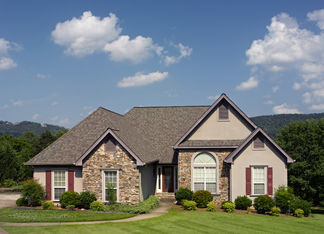 Roofing contractor can help you maintain a functional roof design Roofing contractor in Charlotte and Indian Land SC can help maintain a functional roof for your home. When it comes to roofing, homeowners and builders are continually seeking innovative solutions that not only enhance the aesthetic appeal but also improve functionality and energy efficiency. One emerging trend in the roofing industry is the concept of hybrid roofing systems, where two distinct roofing materials or designs are seamlessly connected to create a unique and versatile structure. What is a Hybrid Roofing System? A hybrid roofing system involves the integration of two different roofing materials or styles to form a cohesive and functional design. This approach allows homeowners and architects to capitalize on the strengths of each roofing system while addressing specific challenges or requirements. It's an inventive way to combine the durability of one material with the aesthetic appeal of another, providing a solution that goes beyond conventional roofing options. Benefits of Hybrid Roofing Systems
Challenges in Creating Hybrid Roofing Systems While the idea of combining two roofing systems may seem promising, it comes with its set of challenges. Roofing professionals need to consider compatibility issues, structural implications, and the long-term performance of the hybrid design. One critical question that arises is whether roofers can successfully connect two roofing systems without compromising the integrity of the structure. Can Your Roofer Connect Two Roofing Systems for a Hybrid Design? Creating a hybrid roofing system involves more than just an aesthetic vision; it requires the expertise of seasoned roofing professionals who can seamlessly connect two disparate roofing materials or designs. Let's explore the technical aspects and challenges involved in bringing a hybrid roofing system to life. Technical Considerations: 1. Compatibility of Materials: Roofing materials must be carefully chosen to ensure compatibility. Materials with similar expansion and contraction rates are preferred to prevent issues such as leaks or structural damage over time. 2. Structural Integrity: Connecting two roofing systems necessitates a thorough assessment of the existing structure. Roofers must ensure that the hybrid design doesn't compromise the overall structural integrity of the building. 3. Weather Resistance: Each roofing material typically has its own set of weather resistance properties. Roofers need to consider how well the combined materials will withstand various weather conditions, including rain, snow, and extreme temperatures. 4. Seamless Integration: Achieving a seamless integration between the two roofing systems is crucial for both aesthetic and functional reasons. Roofers must pay attention to details, such as flashing and sealing, to prevent water infiltration and other potential issues. The Role of Skilled Roofers: Creating a successful hybrid roofing system requires the expertise of skilled and experienced roofing professionals. Here's how roofers can contribute to the realization of a hybrid design: 1. Thorough Assessment: Skilled roofers begin by conducting a comprehensive assessment of the existing roof and its structure. This includes evaluating the condition of the current roofing materials and identifying any potential issues that need addressing. 2. Material Selection: Roofers play a pivotal role in selecting the right combination of roofing materials. Their knowledge of different roofing systems and materials allows them to make informed decisions based on factors such as climate, budget, and the desired aesthetic. 3. Precision Installation: The success of a hybrid roofing system heavily relies on precise installation. Skilled roofers understand the importance of meticulous work, ensuring that the connection points between the two roofing systems are secure and watertight. 4. Quality Craftsmanship: Craftsmanship is key when connecting two roofing systems. Experienced roofers pay attention to details, such as proper flashing installation and sealing techniques, to guarantee the longevity and performance of the hybrid design. Overcoming Challenges in Hybrid Roofing Systems We’ve explored the concept of hybrid roofing systems and their potential benefits. Now, let's delve deeper into the challenges associated with creating these innovative designs and how skilled roofers can address them. Challenges in Creating Hybrid Roofing Systems: 1. Material Compatibility: The challenge lies in finding materials that not only complement each other aesthetically but also work together structurally. Roofers need to ensure that the combination doesn't lead to issues like differential movement, which can compromise the roof's integrity. 2. Seamless Integration: Achieving a seamless connection between two different roofing materials is a meticulous process. Roofers must pay attention to details, such as flashing installation and sealing, to prevent water penetration, a common issue in hybrid designs. 3. Structural Assessment: Roofers must conduct a thorough structural assessment to determine if the existing framework can support the combined weight and stress of the hybrid roofing materials. Reinforcements may be necessary to maintain the structural integrity of the entire roofing system. 4. Weather Resistance: Different roofing materials have varying levels of resistance to weather conditions. Roofers must carefully evaluate how the hybrid design will perform in rain, snow, and fluctuating temperatures to ensure long-term durability. The Role of Skilled Roofers in Overcoming Challenges: 1. Expertise in Material Selection: Skilled roofers bring extensive knowledge of roofing materials and their properties. They can guide homeowners in selecting materials that not only enhance the visual appeal of the roof but also complement each other in terms of durability and weather resistance. 2. Precision Installation Techniques: Connecting two roofing systems requires precision and expertise in installation techniques. Skilled roofers understand the importance of accurate measurements, proper flashing, and meticulous sealing to create a watertight and secure connection. 3. Structural Evaluation and Reinforcement: Experienced roofers conduct a thorough assessment of the existing structure. If necessary, they can recommend and implement structural reinforcements to ensure that the hybrid roofing system does not compromise the building's stability. 4. Attention to Detail: Craftsmanship is crucial in the successful creation of a hybrid roofing system. Skilled roofers pay attention to every detail, ensuring that the transition points between different materials are flawlessly executed, minimizing the risk of leaks or other issues. Creating a hybrid roofing system involves navigating various challenges, from material compatibility to structural considerations. Skilled roofers play a pivotal role in overcoming these challenges, combining their expertise in material selection, precision installation, and structural evaluation. As homeowners in Charlotte and Indian Land, SC explore the possibilities of hybrid roofing designs, partnering with experienced roofers becomes essential for turning their vision into a durable and visually stunning reality. With the right professionals at the helm, the fusion of roofing systems can indeed result in a unique, high-performance solution that stands the test of time. Work with the best roofing contractor in Charlotte and Indian Land SC Advanced Roofing and Exteriors offers commercial roofing and residential roofing services to Charlotte, NC, Indian Land SC, and surrounding areas. 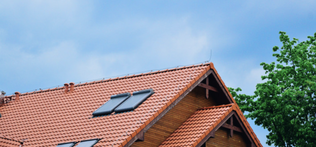 Roof repair contractors can help you maintain a sturdy roof Roof repair contractors in Charlotte and Indian Land SC can help you maintain a functional and sturdy roof that can protect your family in great weather. A sturdy and reliable roof is a crucial component of any building, providing protection against the elements and ensuring the structural integrity of the entire edifice. However, roofs can become fragile over time due to various factors. Understanding these causes is essential for homeowners and builders to address vulnerabilities and mitigate risks. 1. Age and Weathering: One of the primary causes of roof fragility is the natural aging process and prolonged exposure to weather elements. Over the years, constant exposure to sunlight, rain, wind, and temperature fluctuations can take a toll on roofing materials. Shingles may become brittle, lose their flexibility, and ultimately crack or break. This deterioration weakens the overall structure of the roof, making it more susceptible to damage. 2. Poor Installation: The quality of roof installation plays a pivotal role in its long-term durability. Improperly installed roofs are more likely to develop weaknesses and vulnerabilities. Issues such as inadequate fastening, incorrect material placement, and poor sealing can compromise the integrity of the roof, making it fragile and prone to leaks or structural failures. 3. Lack of Maintenance: Regular maintenance is key to preserving the strength and longevity of a roof. Neglecting routine inspections and necessary repairs can lead to the accumulation of debris, moss, and algae. Blocked gutters and drainage systems can result in water pooling on the roof, causing decay and weakening the underlying structure. Regular maintenance helps identify and address potential issues before they escalate. 4. Harsh Climate Conditions: The climate in which a building is located significantly influences the lifespan of its roof. Extreme weather conditions, such as heavy snowfall, intense heat, or frequent storms, can accelerate wear and tear. Additionally, the expansion and contraction of roofing materials in response to temperature fluctuations can contribute to their gradual degradation. 5. Inferior Quality Materials: Choosing low-quality roofing materials to cut costs may result in a fragile and less resilient roof. Inferior shingles, underlayment, or flashing materials are more prone to damage and may not withstand the test of time. Investing in high-quality materials is a wise decision that can prevent premature roof failure. Associated Risks of Fragile Roofs Now that we have explored the causes of fragile roofs, it's crucial to understand the associated risks that come with compromised roofing structures. Recognizing these risks can help homeowners and builders take proactive measures to address vulnerabilities and protect their properties. 1. Leaks and Water Damage: Fragile roofs are more susceptible to leaks, especially during heavy rainfall or snowfall. Water penetration can lead to extensive damage to the interior of the building, including ceilings, walls, insulation, and even the foundation. Over time, untreated leaks can result in mold growth, compromising indoor air quality and posing health risks to occupants. 2. Structural Damage: A fragile roof may not provide adequate support to the overall structure of the building. This can lead to sagging, warping, or even partial collapse in extreme cases. Structural damage not only poses a significant safety risk but also necessitates costly repairs or, in severe cases, a complete roof replacement. 3. Energy Inefficiency: Roofing materials contribute to the insulation of a building. Fragile roofs with compromised insulation properties can lead to energy inefficiency. Heating and cooling systems may need to work harder to maintain a comfortable indoor temperature, resulting in increased energy bills. Proper roof maintenance and repair can help retain optimal insulation. 4. Increased Repair Costs: Ignoring the signs of a fragile roof can lead to escalating repair costs. What may start as a minor issue, such as a small leak, can quickly develop into a more significant problem if left unaddressed. Proactive maintenance and timely repairs can prevent small issues from turning into costly endeavors. 5. Decreased Property Value: A fragile roof negatively impacts the overall value of a property. Potential buyers are likely to be deterred by the prospect of having to invest in roof repairs or replacements shortly after purchasing a home. Maintaining a robust roof not only ensures the safety and comfort of occupants but also contributes to the long-term value of the property. Protecting Your Investment with Professional Roof Repair: When it comes to safeguarding your property in Charlotte and Indian Land SC, investing in professional roof repair is a proactive measure against the risks associated with fragile roofs. Experienced contractors understand the local climate challenges and use high-quality materials, ensuring longevity and resilience. Regular inspections and timely repairs can prevent leaks, structural damage, and energy inefficiency, preserving the value of your home. Whether addressing aging issues, poor installation, or weather-related wear, trusted roof repair contractors play a crucial role in maintaining a robust roofing system. Don't wait for signs of fragility to escalate; take the initiative to secure your investment and enjoy a durable and reliable roof for years to come. In conclusion, understanding the causes of fragile roofs and the associated risks is essential for homeowners and builders. Regular maintenance, high-quality materials, and proper installation are critical factors in ensuring the longevity and resilience of roofs, ultimately safeguarding the integrity of the entire structure. By addressing vulnerabilities promptly, property owners can mitigate risks and enjoy the benefits of a durable and reliable roofing system. Hire the best roof repair contractors in Charlotte and Indian Land SC Advanced Roofing and Exteriors offers commercial roofing and residential roofing services to Charlotte, NC, Indian Land SC, and surrounding areas. |
AboutLearn about your options when it comes to roof repair and roof installation in Charlotte. Archives
July 2024
|
 RSS Feed
RSS Feed
